Complete Solutions to Electricity of chapter ELECTRICITY of Class 10 book with complete answers and questions
| Class 10 | PHYSICS |
| Chapter | ELECTRICITY |
| NCERT EXEMPLAR | Electricity |
| Number Of Questions | 35 |
| Academic Year | 2023-24 |
A cell, a resistor, a key and an ammeter are arranged as known in the circuit diagrams of figure. The current recorded in the ammeter will be
 01:14View Solution
01:14View SolutionIn the following circuits, heat produced in the resistor or combination of resistors connected to a 12 V battery will be
 01:45View Solution
01:45View SolutionElectrical resistivity of a given metallic wire depends upon :
02:00View SolutionA current of `1 A` is drawn by a filament of an electric bulb. Number of electrons passing through a cross-section of the filament in `16` seconds would be roughly :
02:21View SolutionIdentify the circuit, (Fig. 3.39) in which the electrical components have been properly connected.
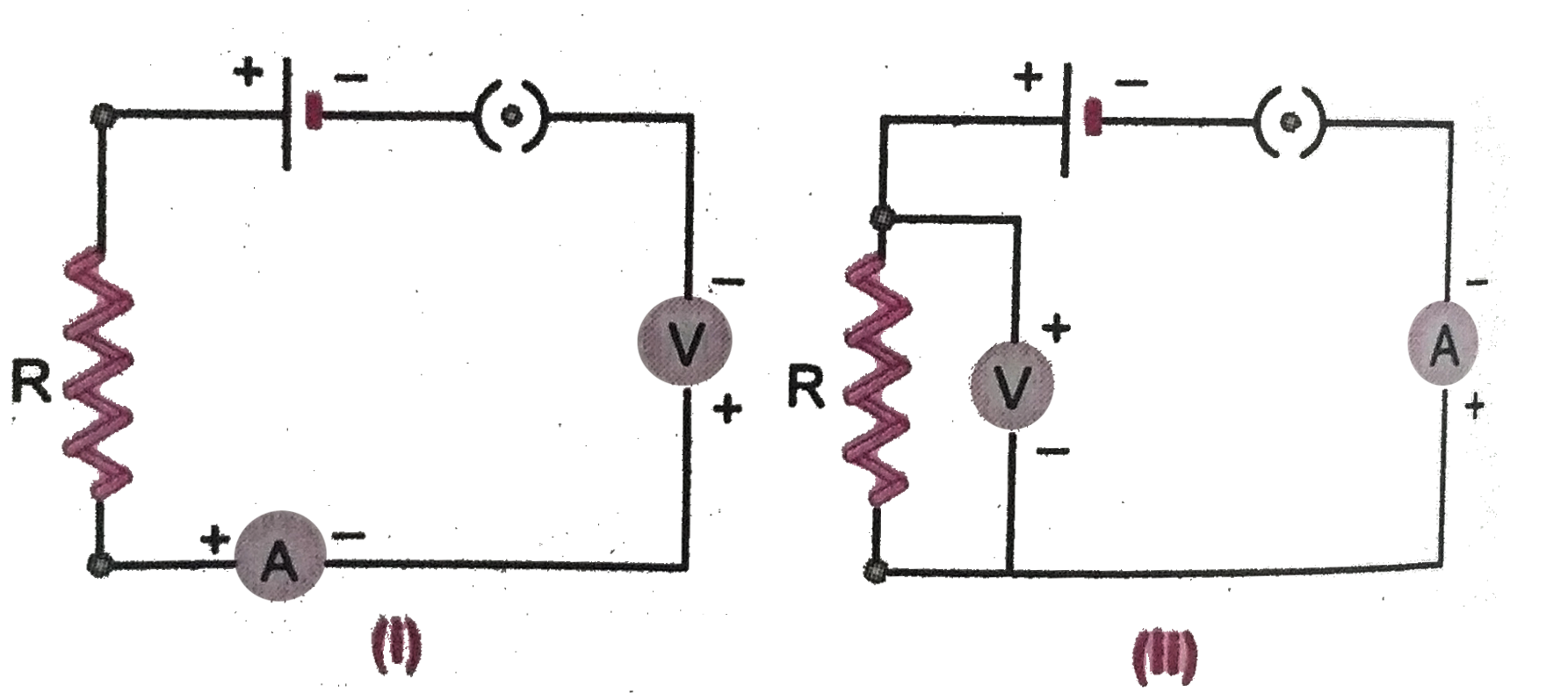
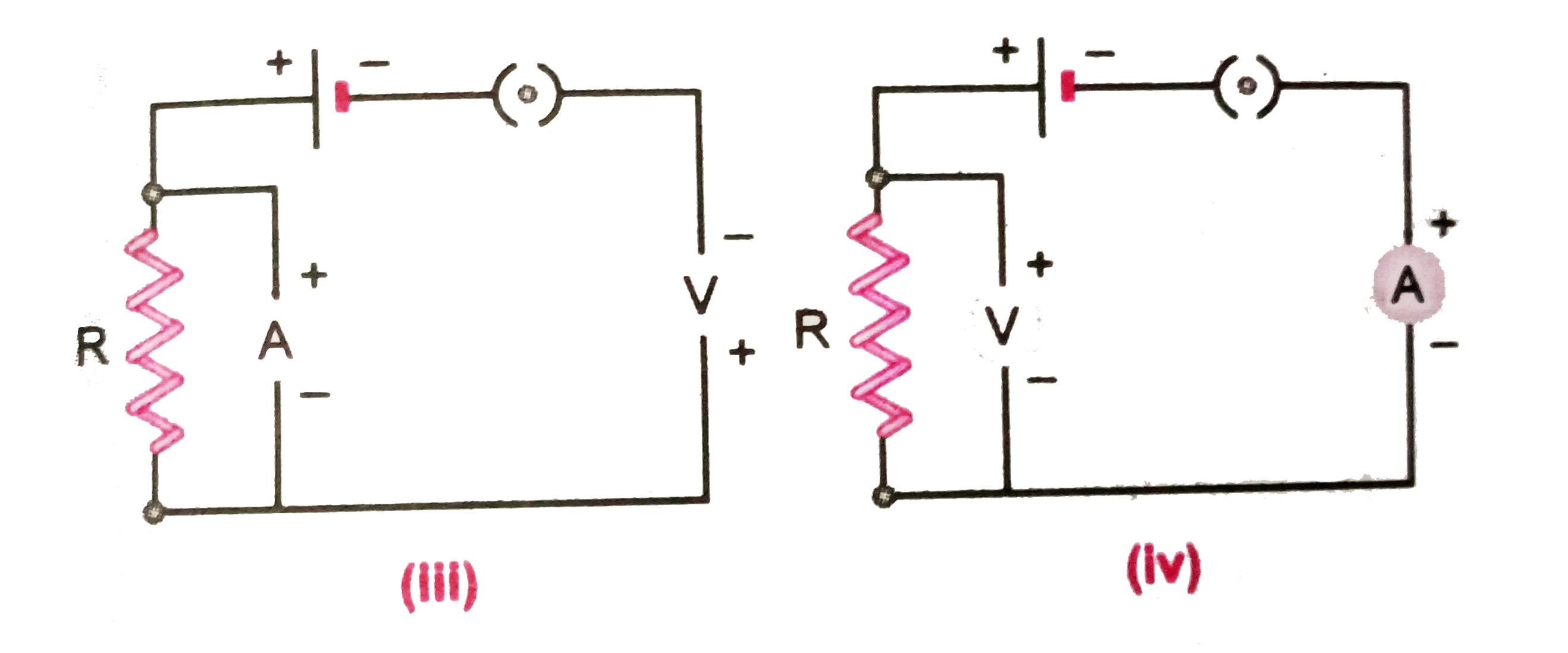 03:50View Solution
03:50View SolutionWhat is the maximum resistance which can be made using five resistors each of `(1//5) Omega` ?
01:40View SolutionWhat is the minimum resistance which can be made using five resistors each of `(1//5) Omega` ?
02:47View SolutionThe proper representation of series combination of cells obtaining maximum potential is
 01:51View Solution
01:51View SolutionWhich of the following represents voltage ?
02:51View SolutionA cylindrical conductor of length `l` and uniform area of cross-section `A` has resistance `R`. Another conductor of length `2 l` and resistance `R` of the same material has area of cross-section :
02:44View SolutionA student carries out an experiment and plots the `V-I` graphs of three samples of nichrome wire with resistances `R_1,R_2 and R_3` respectively, (Fig. 3.41). Which of the following is true ?
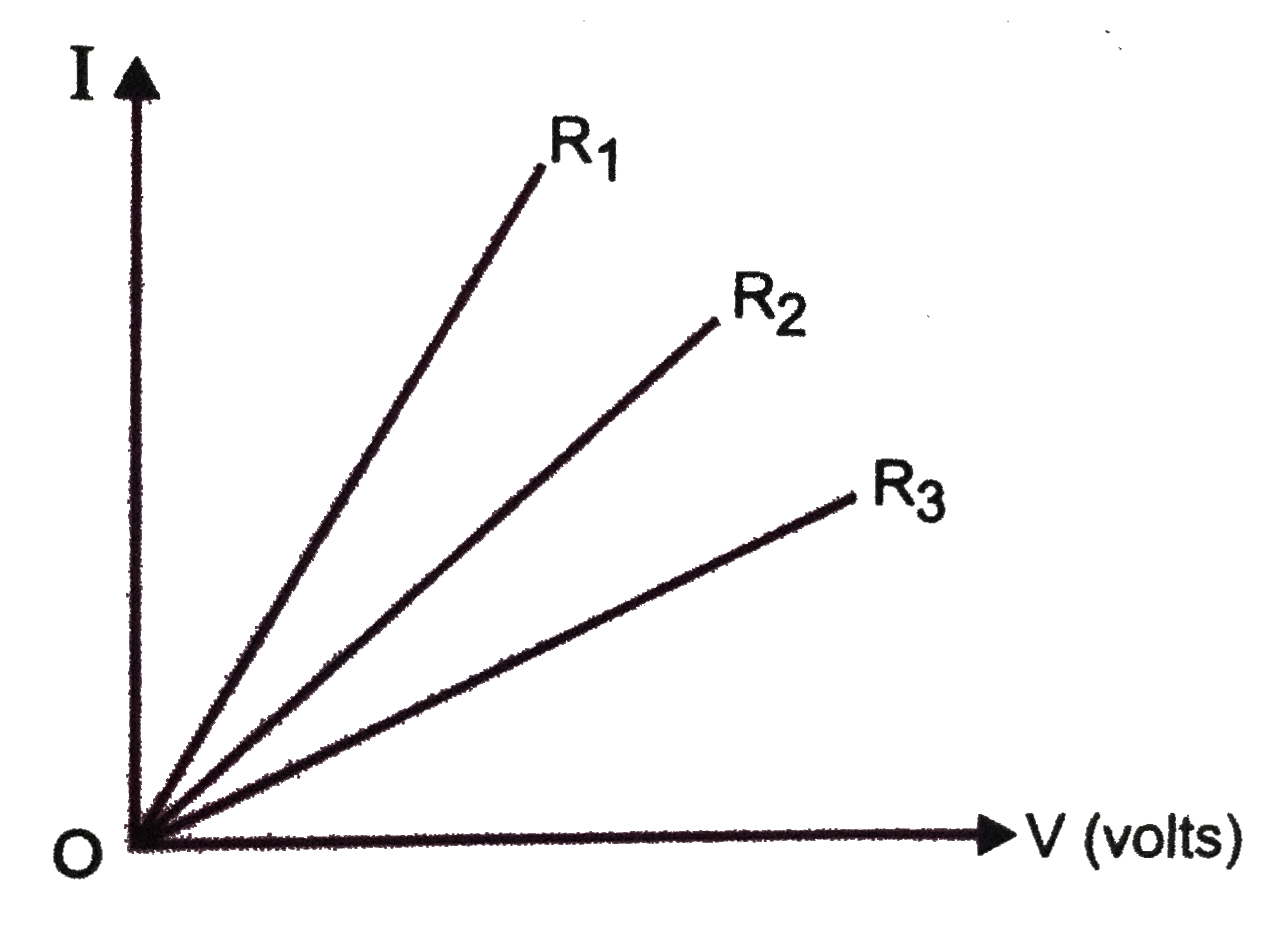 04:06View Solution
04:06View SolutionIf the current `I` through a resistor is increased by `100%` (assume that temperature remains unchanged), the increase in power dissipated will be :
03:17View SolutionThe resistivity does not change if :
02:41View SolutionIn an electrical circuit three incandescent bulbs `A,B and C` of rating `40 W, 60 W and 100 W` respectively are connected in parallel to an electric source. Which of the following is likely to happen regarding their brightness ?
03:59View SolutionIn an electrical circuit, two resistors of `2 Omega and 4 Omega` respectively are connected in series to a `6 V` battery. The heat dissipated by the `4 Omega` resistor in `5 s` will be :
03:03View SolutionAn electric kettle consumes `1 kW` of electric power when operated at `220 V`. A fuse-wire of what rating must be used for it ?
02:38View SolutionTwo resistors of resistances `2 Omega and 4 Omega` when connected to a battery will have :
02:43View SolutionUnit of electric power may also be expressed as :
04:07View SolutionA child has drawn the electric circuit to study Ohm's law as shown in (Fig. 3.42). His teacher told him that the circuit diagram needs correction. Study the circuit diagram and redraw it after making all corrections.
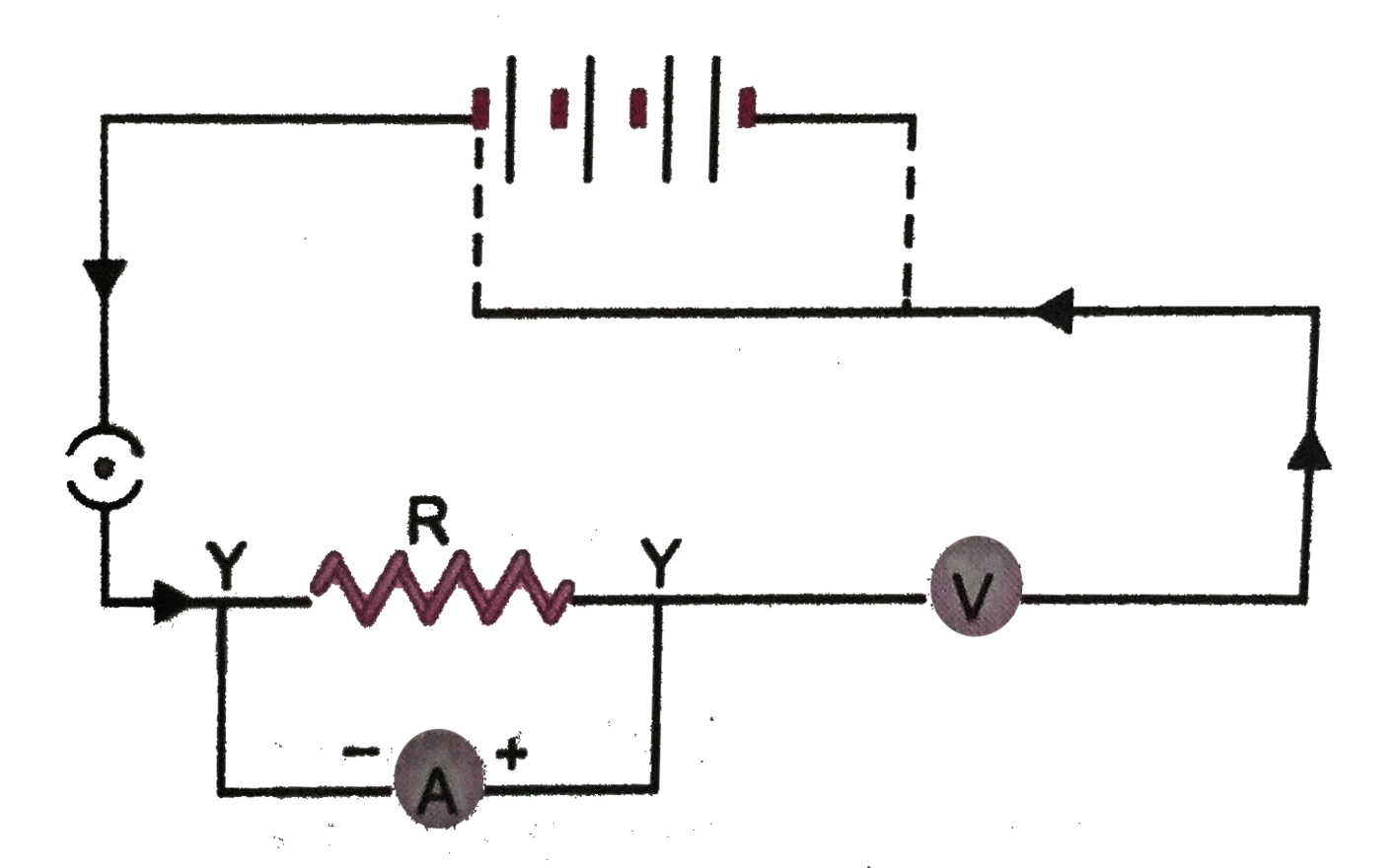 .02:47View Solution
.02:47View SolutionThree `2 Omega` resistors, A, B and C are connected as shown in figure. Each of them dissipates energy and can with stand a maximum power of 18 W without melting. Find the maximum current that can flow through the three resistors ?
 02:27View Solution
02:27View SolutionShould the resistance of an ammeter be low or high ? Give reason.
03:01View SolutionDraw a circuit diagram of an electric circuit containing a cell, a key, an ammeter, a resistance of `2 Omega` in series with a combination of two resistors (`4 Omega` each) in parallel and a voltmeter across the parallel combination. Will the potential difference across the `2 Omega` resistor be the same as that across the parallel combination of `4 Omega` resistors ? Give reason.
05:04View SolutionHow does use of a fuse-wire protect electrical appliances ?
04:03View SolutionWhat is electrical resistivity ? In a series electrical circuit comprising a resistor made up of a matallic wire, the ammeter reads `5 A`. The reading of the ammeter decreases to half when the length of the wire is doubled. Why ?
03:39View SolutionWhat is the commercial unit of electrical energy ? Represent it in terms of joules.
03:52View Solution(a) A current of `1 A` flows in a series curcuit containing an electric lamp and a conductor of `5 Omega` when connected to a `10 V` battery. Calculate the resistance of the electric lamp.
(b) Now if a resistance of `10 Omega` is connected in parallel with this series combination, what change (if any) in current flowing through `5 Omega` conductor and potential difference across the lamp will take place ? Give reason.07:58View SolutionWhy is parallel arrangement used in domestic wiring ?
01:52View Solution`B_1,B_2 and B_3` are three identical bulbs connected as shown in (fig. 3.46). When all the three bulbs glow, a current of `3 A` is recorded by the ammeter `A`.
(i) What happens to the glow of the other two bulbs when the bulb `B_1` gets fused ?
(ii) What happens to the readings of `A_1,A_2,A_3 and A` when the bulb `B_2` gets fused ?
(iii) How much power is dissipated in the circuit when all the three bulbs glow together ?
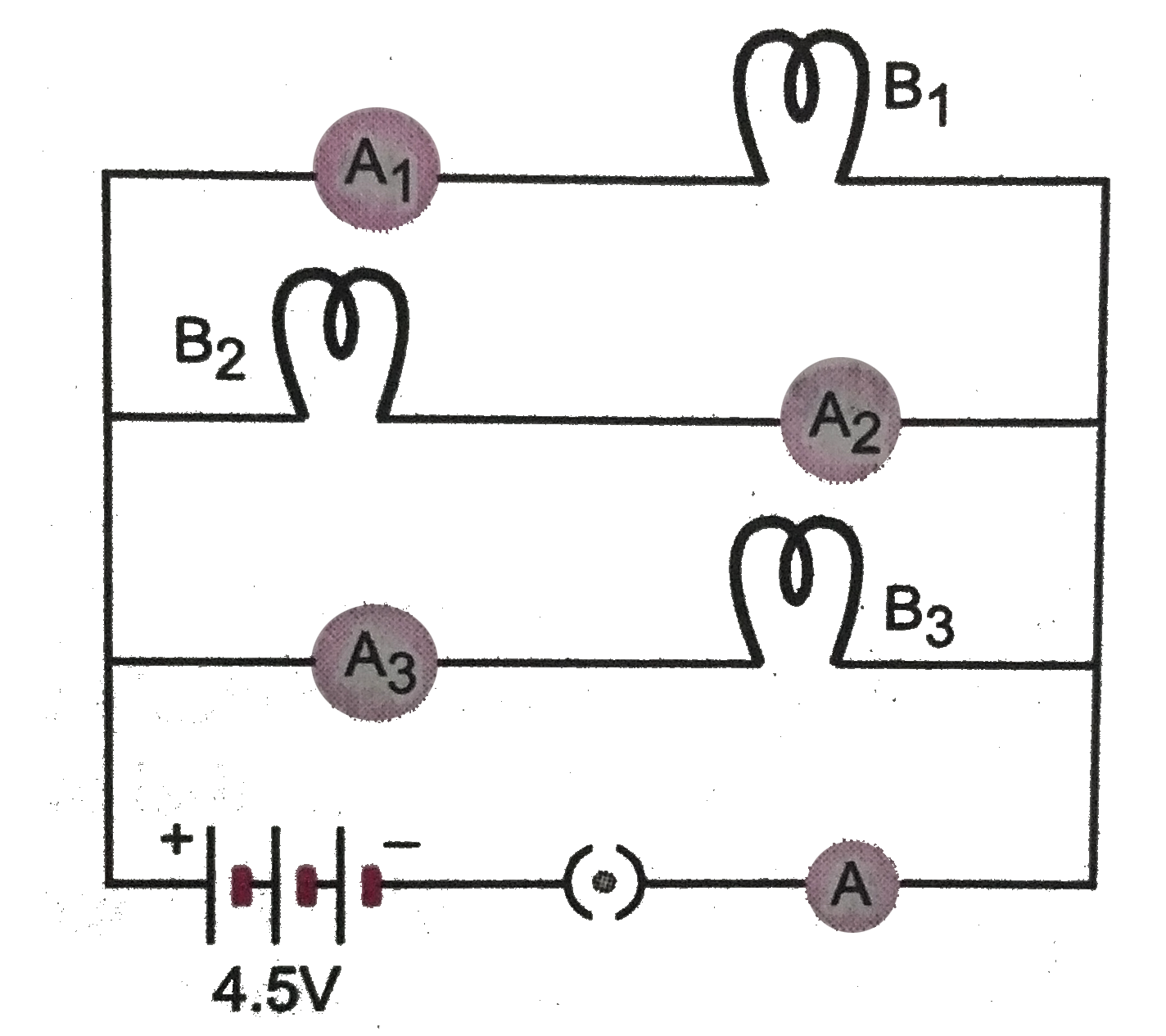 .07:57View Solution
.07:57View SolutionThree incandecent bulbs of `100 W` each are connected in series in an electric circuit. In another circuit another set of three bulbs of the same wattage are connected in parallel to the same source.
(a) Will the bulbs in the two circuits glow with the same brightness ? Justify your answer.
(b) Now let one bulb in both the circuits get fused. Will the rest of the bulbs continue to glow in each circuit ? Give reason.05:59View SolutionState Ohm's law ? How can it be verified experimentally ? Does it hold good under all conditions ? Comment.
03:53View SolutionWhat is electrical resistivity ? How does it depend om temperature. Give its `SI` unit.
02:30View SolutionHow will you infer with the help of an experiment that the same current flows through every part of the circuit containing three resistances in series connected to a battery ?
02:54View SolutionHow will you conclude that the same potential difference (voltage) exists across three resistors connected in a parallel arrangement to a battery ?
02:27View SolutionWhat is Joule's heating effect ? How can it be demonstrated experimentally ? List its four applications in daily life.
05:17View SolutionFind out the folowing in the electric circuit given in (Fig. 3.48).
(a) Effective resistance of two `8 Omega` resistors in the combination
(b) Current flowing through `4 Omega` resistor
( c) Potential difference across `4 Omega` resistance
(d) Power dissipated in `4 Omega` resistor
(e) Difference in ammeter readings, if any.
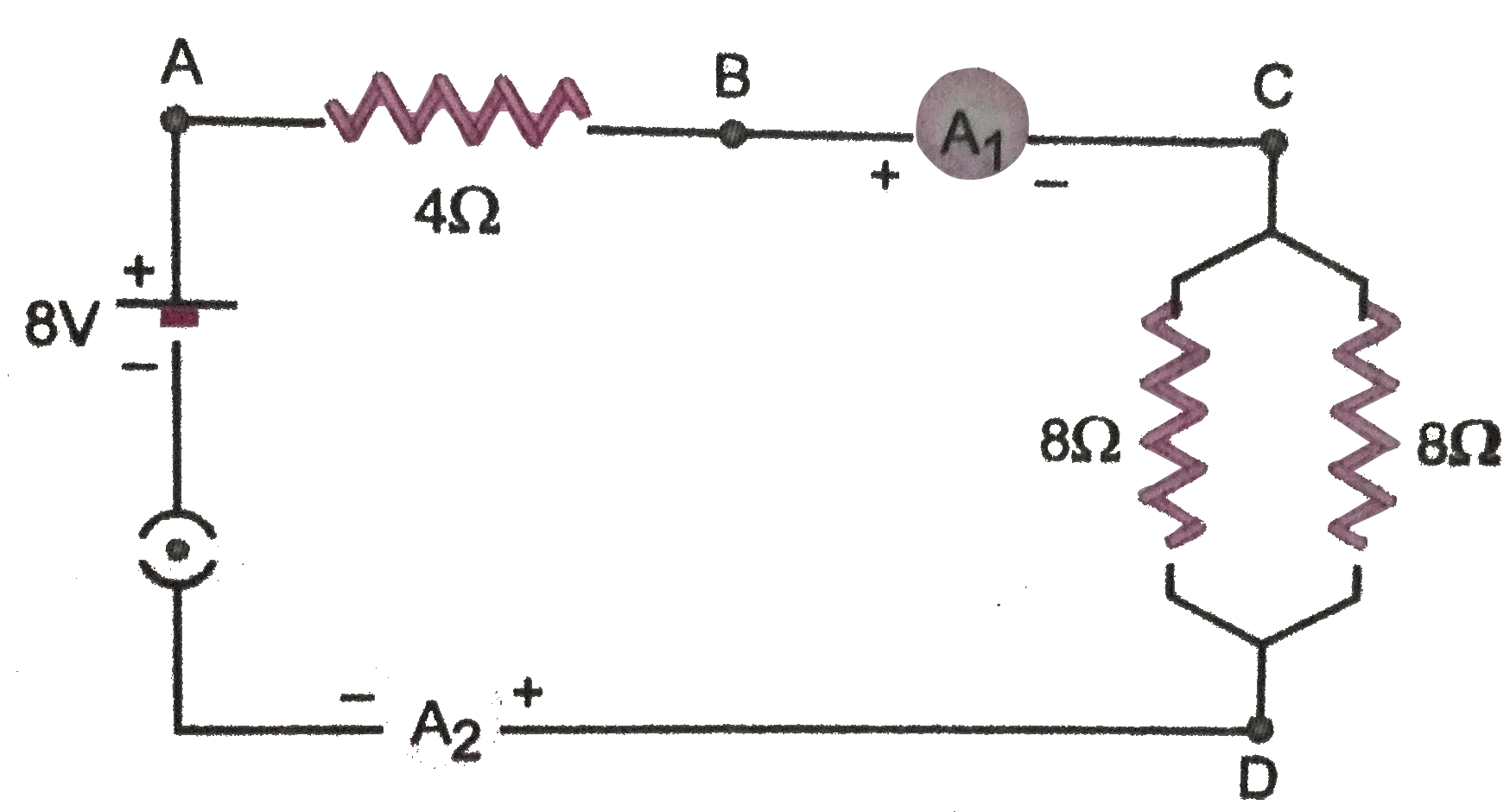 .08:54View Solution
.08:54View Solution
Electricity questions and complete solutions for chapter ELECTRICITY of NCERT EXEMPLAR PHYSICS (HINGLISH) of Class 10
